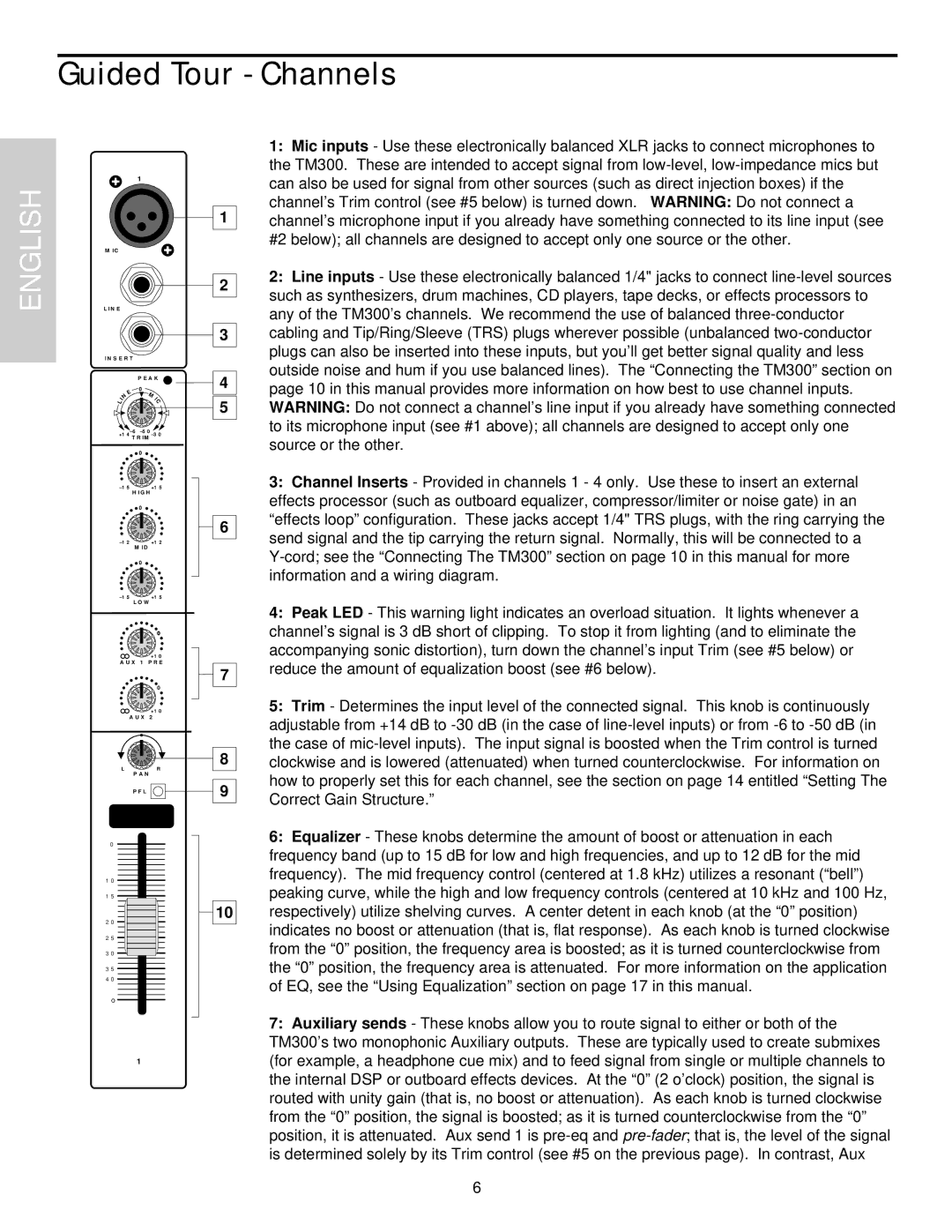TM300 specifications
The Samson TM300 is a highly regarded professional microphone designed for studio and live performance applications. Renowned for its distinctive sound quality and durability, the TM300 caters to musicians, vocalists, and audio engineers alike.At the core of the TM300's design is its dynamic microphone element, which excels in capturing the nuances of vocal performances. This type of microphone inherently rejects unwanted noise and feedback, making it an excellent choice for both live settings and studio recordings. The TM300's frequency response, typically spanning from 50Hz to 15kHz, showcases its ability to reproduce deep lows and crisp highs, ensuring that every vocal nuance is accurately captured.
One of the standout features of the TM300 is its cardioid polar pattern. This directional pickup pattern allows the microphone to focus on sound sources directly in front of it while minimizing background noise from the sides and rear. This characteristic is crucial in live settings, where minimizing ambient noise can greatly enhance the clarity of the performance.
The TM300 is built with high-quality materials, featuring a rugged metal housing that can withstand the rigors of frequent use. Its sturdy construction ensures longevity, even in demanding environments. Furthermore, the microphone includes a built-in pop filter that helps reduce plosive sounds (such as "p" and "b" consonants), providing cleaner audio capture without the need for additional accessories.
In terms of connectivity, the Samson TM300 typically utilizes a standard XLR output, making it compatible with a wide range of mixing consoles, audio interfaces, and recording devices. This versatility allows it to be seamlessly integrated into both professional and home studio setups.
For audio professionals seeking an affordable yet high-performance microphone, the Samson TM300 offers exceptional sound quality, rugged build, and user-friendly features. Whether used for live performances, studio recordings, or broadcast applications, the TM300 continues to impress with its reliable performance, making it a favorite choice among musicians and audio engineers alike. As the demand for quality audio equipment rises, the TM300 remains a testament to Samson's commitment to excellence in the audio industry.

